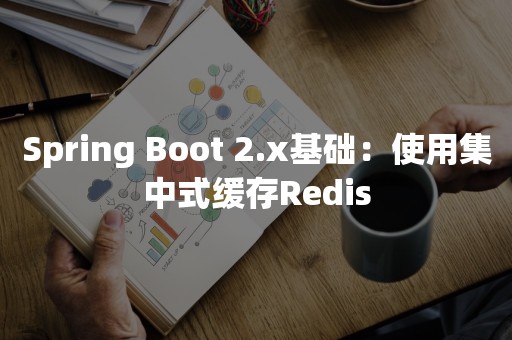Spring Boot 2.x基础:使用集中式缓存Redis
Spring Boot 2.x基础:使用集中式缓存Redis

我们介绍了两种进程内缓存的用法,包括Spring Boot默认使用的ConcurrentMap缓存以及缓存框架EhCache。虽然EhCache已经能够适用很多应用场景,但是由于EhCache是进程内的缓存框架,在集群模式下时,各应用服务器之间的缓存都是独立的,因此在不同服务器的进程间会存在缓存不一致的情况。即使EhCache提供了集群环境下的缓存同步策略,但是同步依然是需要一定的时间,短暂的缓存不一致依然存在。
在一些要求高一致性(任何数据变化都能及时的被查询到)的系统和应用中,就不能再使用EhCache来解决了,这个时候使用集中式缓存就可以很好的解决缓存数据的一致性问题。接下来我们就来学习一下,如何在Spring Boot的缓存支持中使用Redis实现数据缓存。
动手试试
本篇的实现将基于上一篇的基础工程来进行。先来回顾下上一篇中的程序要素:
User实体的定义
@Entity @Data @NoArgsConstructor public class User implements Serializable { @Id @GeneratedValue private Long id; private String name; private Integer age; public User(String name, Integer age) { this.name = name; this.age = age; } }
User实体的数据访问实现(涵盖了缓存注解)
@CacheConfig(cacheNames = "users") public interface UserRepository extends JpaRepository
下面开始改造这个项目:
第一步:pom.xml中增加相关依赖:
在Spring Boot 1.x的早期版本中,该依赖的名称为spring-boot-starter-redis,所以在Spring Boot 1.x基础教程中与这里不同。
第二步:配置文件中增加配置信息,以本地运行为例,比如:
spring.redis.host=localhost spring.redis.port=6379 spring.redis.lettuce.pool.max-idle=8 spring.redis.lettuce.pool.max-active=8 spring.redis.lettuce.pool.max-wait=-1ms spring.redis.lettuce.pool.min-idle=0 spring.redis.lettuce.shutdown-timeout=100ms
关于连接池的配置,注意几点:
Redis的连接池配置在1.x版本中前缀为spring.redis.pool与Spring Boot 2.x有所不同。
在1.x版本中采用jedis作为连接池,而在2.x版本中采用了lettuce作为连接池
以上配置均为默认值,实际上生产需进一步根据部署情况与业务要求做适当修改.
再来试试单元测试:
@Slf4j @RunWith(SpringRunner.class) @SpringBootTest public class Chapter54ApplicationTests { @Autowired private UserRepository userRepository; @Autowired private CacheManager cacheManager; @Test public void test() throws Exception { System.out.println("CacheManager type : " + cacheManager.getClass()); // 创建1条记录 userRepository.save(new User("AAA", 10)); User u1 = userRepository.findByName("AAA"); System.out.println("第一次查询:" + u1.getAge()); User u2 = userRepository.findByName("AAA"); System.out.println("第二次查询:" + u2.getAge()); } }
执行测试输出可以得到:
CacheManager type : class org.springframework.data.redis.cache.RedisCacheManager Hibernate: select next_val as id_val from hibernate_sequence for update Hibernate: update hibernate_sequence set next_val= ? where next_val=? Hibernate: insert into user (age, name, id) values (?, ?, ?) 2020-08-12 16:25:26.954 INFO 68282 --- [ main] io.lettuce.core.EpollProvider : Starting without optional epoll library 2020-08-12 16:25:26.955 INFO 68282 --- [ main] io.lettuce.core.KqueueProvider : Starting without optional kqueue library Hibernate: select user0_.id as id1_0_, user0_.age as age2_0_, user0_.name as name3_0_ from user user0_ where user0_.name=? 第一次查询:10 第二次查询:10
可以看到:
第一行输出的CacheManager type为org.springframework.data.redis.cache.RedisCacheManager,而不是上一篇中的EhCacheCacheManager了
第二次查询的时候,没有输出SQL语句,所以是走的缓存获取
整合成功!
思考题
既然EhCache等进程内缓存有一致性问题存在,而Redis性能好而且还能解决一致性问题,那么我们只要学会用Redis就好了咯,为什么还要学进程内缓存呢?先留下你的思考,下一篇我们一起讨论这个问题!欢迎关注本系列教程:《Spring Boot 2.x基础教程》
代码示例
本文的相关例子可以查看下面仓库中的chapter5-4目录:
戳这里,看该作者更多好文
版权声明:本文内容由网络用户投稿,版权归原作者所有,本站不拥有其著作权,亦不承担相应法律责任。如果您发现本站中有涉嫌抄袭或描述失实的内容,请联系我们jiasou666@gmail.com 处理,核实后本网站将在24小时内删除侵权内容。



